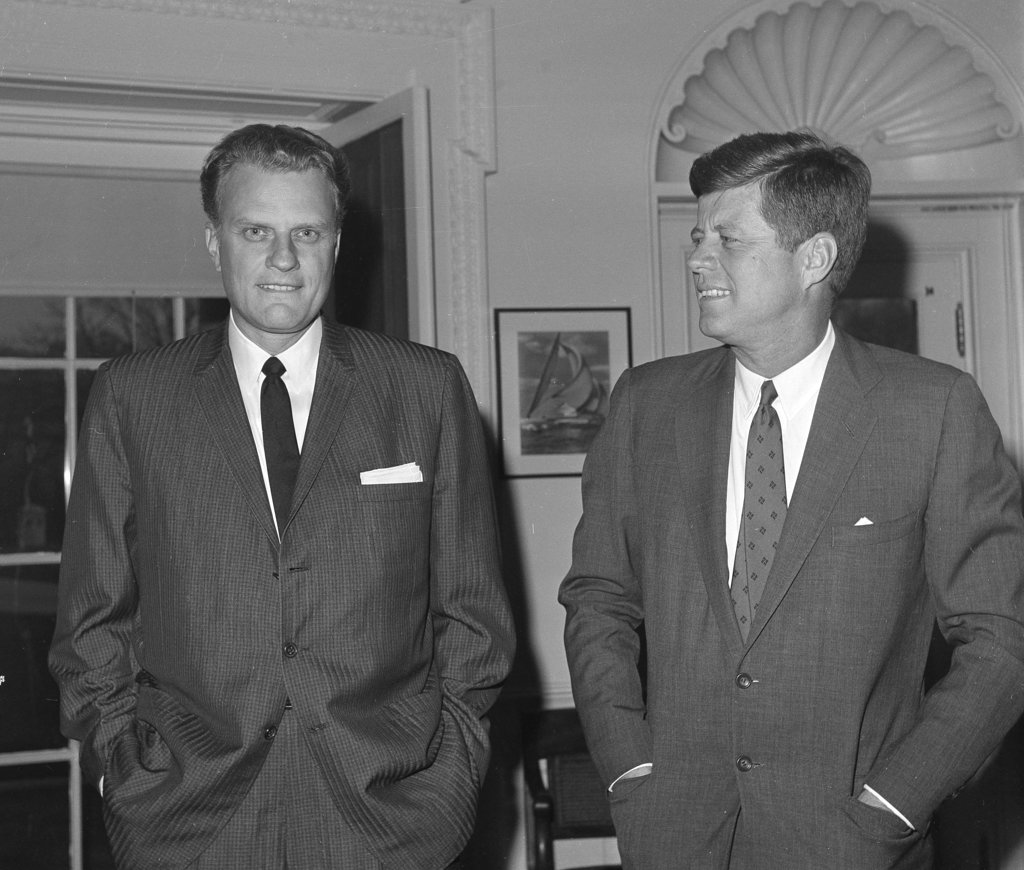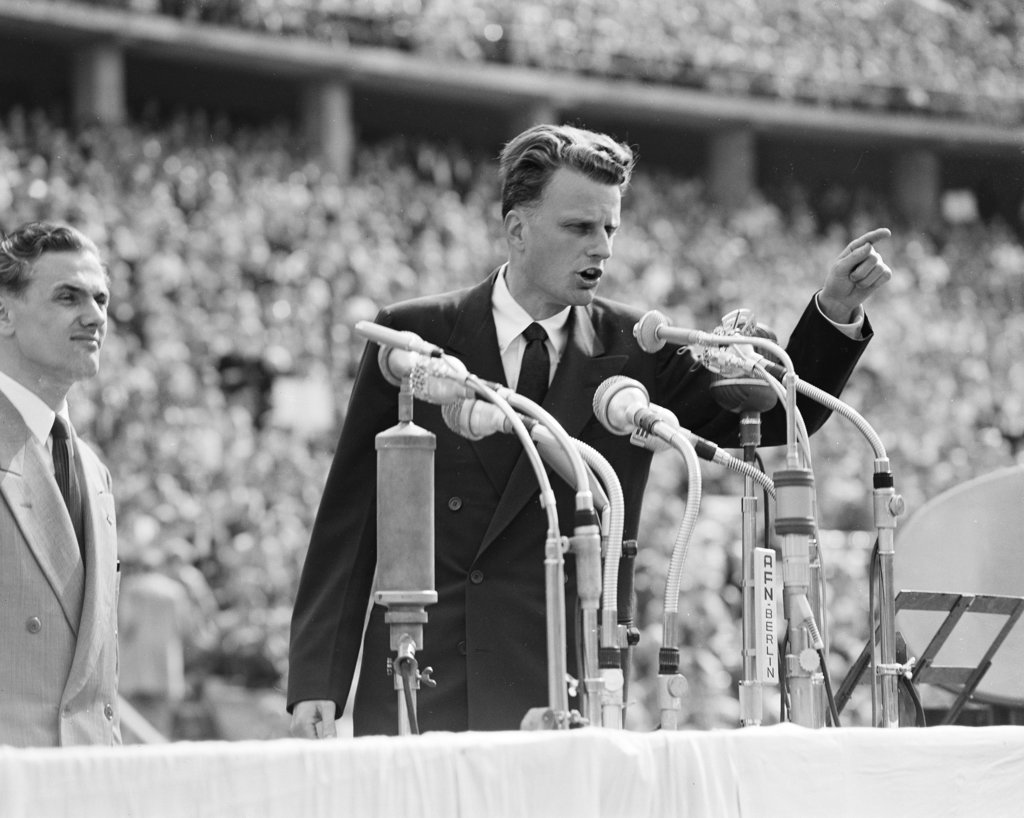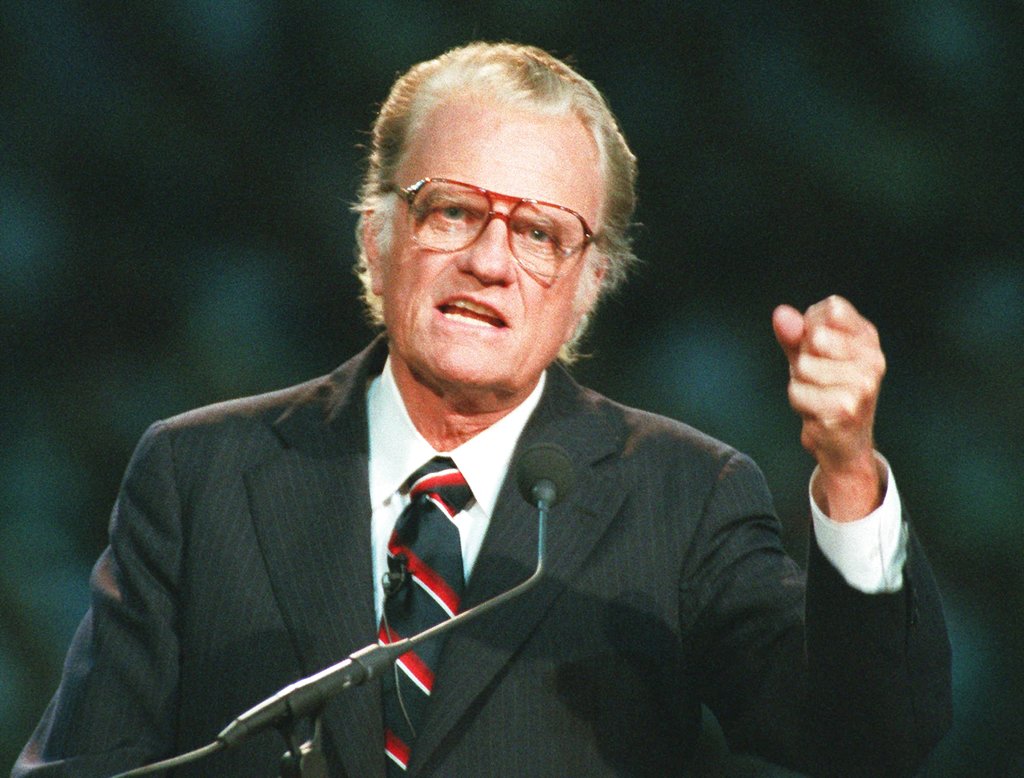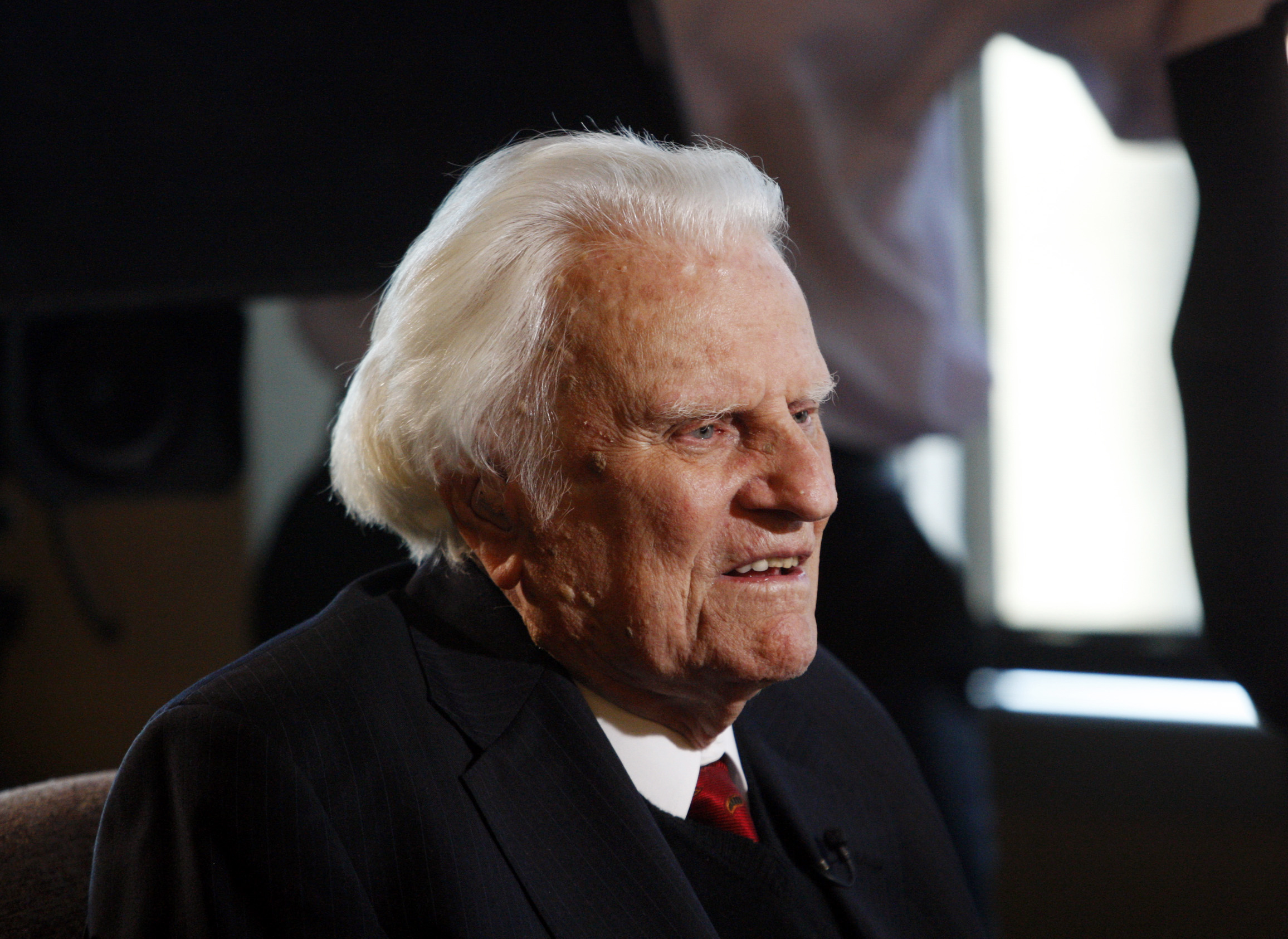MONTREAT, N.C. (AP) — As a young man, he practiced his sermons by preaching to the alligators and birds in the swamp. At his height years later, he was bringing the word of God into living rooms around the globe via TV and dispensing spiritual counsel — and political advice — to U.S. presidents.
The Rev. Billy Graham, dubbed “America’s Pastor” and the “Protestant Pope,” died Wednesday at his North Carolina home at age 99 after achieving a level of influence and reach no other evangelist is likely ever to match.
More than anyone else, the magnetic, Hollywood-handsome Graham built evangelicalism into a force that rivaled liberal Protestantism and Roman Catholicism in the United States.
He transformed the tent revival into an event that filled football arenas, and reached the masses by making pioneering use of TV in prosperous postwar America. By his final crusade in 2005, he had preached in person to more than 210 million people worldwide.
All told, he was the most widely heard Christian evangelist in modern history.
“Graham is a major historical figure, not merely to American evangelicals, but to American Christianity in general,” said Bill Leonard, a professor at Wake Forest University Divinity School in North Carolina. Graham was “the closest thing to a national Protestant chaplain that the U.S. has ever had.”

A tall figure with swept-back hair, blue eyes and a strong jaw, Graham was a commanding presence in the pulpit with a powerful baritone voice. His catchphrase: “The Bible says …”
Despite his international renown, he would be the first to say his message was not complex or unique. But he won over audiences with his friendliness, humility and unyielding religious conviction.
He had an especially strong influence on the religion and spirituality of American presidents, starting with Dwight Eisenhower, whom he urged to run for office and baptized at the White House. George W. Bush credited Graham with helping him transform himself from carousing, hard-drinking oilman to born-again Christian family man.
William Franklin Graham Jr. wasn’t always so skilled. After World War II, as an evangelist in the U.S. and Europe with Youth for Christ, he was dubbed “the Preaching Windmill” for his arm-swinging and rapid-fire speech.
His first meeting with a U.S. president, Harry Truman, was a disaster. Wearing a pastel suit and loud tie that he would later say made him look like a vaudeville performer, the preacher, unfamiliar with protocol, told reporters what he had discussed with Truman, then posed for photos.
But those were early stumbles on his path to fame and influence.

His first White House visit with Lyndon Johnson, scheduled to last only minutes, stretched to several hours. He urged Gerald Ford to pardon Richard Nixon and supported Jimmy Carter on the SALT disarmament treaty. He stayed at the White House with George H.W. Bush on the eve of the first Persian Gulf War.
His presidential ties proved problematic when his close friend Nixon resigned in the Watergate scandal in 1974, leaving Graham devastated, embarrassed and baffled.
Later, tapes released in 2002 caught the preacher telling Nixon that Jews “don’t know how I really feel about what they’re doing to this country.”
Graham apologized, saying he didn’t recall ever having such feelings. He asked the Jewish community to consider his actions instead of his words.
At the height of his career, he would be on the road for months at a time. The strain of so much preaching caused the already trim Graham to lose as much as 30 pounds by the time one of his crusades ended.
His wife, Ruth, mostly stayed behind at their mountainside home in Montreat to raise their five children: Franklin, Virginia (“Gigi”), Anne, Ruth and Nelson (“Ned”). Ruth sometimes grew so lonely when Billy was traveling that she slept with his tweed jacket for comfort. But she said, “I’d rather have a little of Bill than a lot of any other man.”
Beyond Graham’s TV appearances and speaking engagements, he reached multitudes through network radio, including “The Hour of Decision,” film and newspapers.

One of Graham’s breakthrough films was “The Restless Ones,” made in the 1960s, about morally adrift teens in Southern California who found the strength to withstand temptation after attending a Billy Graham crusade.
In the 1950s he created a syndicated newspaper column, “My Answer,” which at its height reached tens of millions of readers.
Early on, he took up the cause of anti-communism, preaching against its atheistic evils. But he was much less robust in his support for civil rights and did join his fellow clergymen in the movement’s marches, a position he later said he regretted.
“I think I made a mistake when I didn’t go to Selma” to join the Rev. Martin Luther King Jr., he said in a 2005 interview. “I would like to have done more.”
Still, Graham ended racially segregated seating at his Southern crusades in 1953, a year before the Supreme Court’s school integration ruling, and long refused to visit South Africa while its white regime insisted on separating the races at meetings.
Graham’s integrity lifted him through the dark days of the late 1980s, after scandals befell TV preachers Jimmy Swaggart and Jim Bakker.
Graham had resolved early on never to be alone with a woman other than his wife. Instead of taking a share of the offerings at his crusades, he drew a modest salary from his ministry, which was governed by an independent board, instead of by friends and relatives.
“Why, I could make a quarter of a million dollars a year in this field or in Hollywood if I wanted to,” Graham once said. “The offers I’ve had from Hollywood studios are amazing. But I just laughed. I told them I was staying with God.”
Later in his career, Graham visited communist Eastern Europe. Increasingly, he appealed for world peace.
Graham’s path began taking shape at age 16, when the Presbyterian-reared farm boy committed himself to Christ at a tent revival around Charlotte, North Carolina.
After high school, he enrolled at the fundamentalist Bob Jones College, then transferred to Florida Bible Institute in Tampa. There, he practiced his sermonizing in a swamp.
He still wasn’t convinced he should be a preacher until a soul-searching, late-night ramble on a golf course.
“I finally gave in while pacing at midnight on the 18th hole,” he said. “‘All right, Lord,’ I said, ‘If you want me, you’ve got me.'”
A 1949 Los Angeles revival in a tent dubbed the “Canvas Cathedral” turned Graham into evangelism’s rising star. Legendary publisher William Randolph Hearst had ordered his papers to hype Graham, though the evangelist said he never learned why.
He later embarked on expectation-defying crusades in London and New York, soon becoming a global voice for Christianity.
Health problems gradually slowed Graham. In 1995 his son William Franklin Graham III, then 43, was designated the ministry’s leader.
Billy Graham’s wife died in 2007 at age 87. Graham will be buried next to her at the Billy Graham Museum and Library in Charlotte. There was no immediate word on other funeral arrangements.
